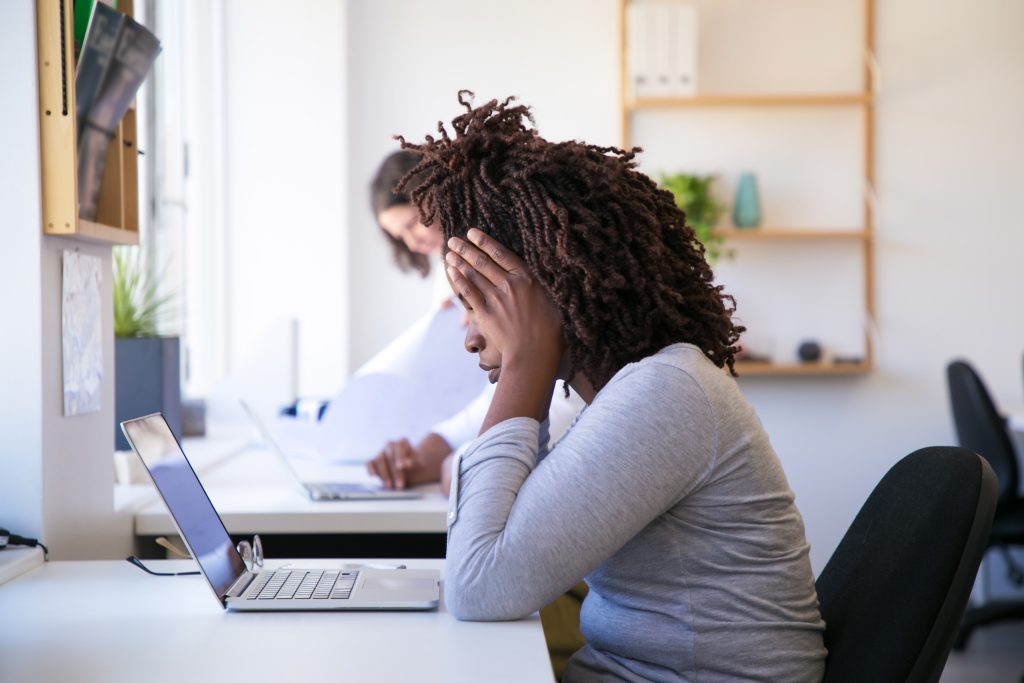These days, it’s difficult to avoid staring at a screen thanks to technology. The world is FULL of digital screens, from our car navigation screens to our smartphones, tablets, and PCs. Digital eye strain, often known as “computer vision syndrome,” is more than likely present if you spend the entire day staring at a computer screen. But do not worry! There are strategies to lessen this stress.
1. Keep a straight posture
You may not be aware of the connection between your posture and your eyes, but the best way to prevent eye strain while working is to always sit in the right position.
Make sure your feet are flat on the floor and your wrists are slightly lifted rather than resting on your keyboard when you sit down at your computer. Just below your normal line of sight, place your screen.
Place the computer such that you may look down slightly while using it. Compared to staring directly across or up, it is gentler on the eyes. A downward glance reduces the likelihood of being impacted by the glare and helps lower the eyelid.
But watch that you’re sitting up straight. Slouching over the keyboard can lead to muscle strain in the shoulders and back, which can reduce blood supply to the eyes and impair vision.
2. Computer glasses
Prescription eyeglasses made exclusively for using a computer are known as computer glasses. They enable you to direct your gaze towards a computer screen, which is typically farther away than a piece of reading material. When viewing digital screens, computer glasses improve your vision and lessen glare.
3. The 20-20-20 formula
Take a glance at something 20 feet away for 20 seconds after working for 20 minutes. Your eyes have muscles that allow them to move and focus on various objects, but if we gaze at a screen at a fixed distance for long periods of time, those muscles find it difficult to adjust when we walk away from the screen. This is what can lead to that day’s end fuzzy feeling, so avoid it by periodically looking about.
4. Lighting matters
Even with backlighting, the right room illumination is still important. Too much light or too little might cause headaches and increased eye strain. Your screen should be sufficiently bright to avoid the need for squinting, but not so bright that it appears to be illuminated. Also crucial is minimizing glare.
Use an anti glare coating, surround your computer with a screen, and make sure no other light sources are shining on the screen to prevent glare.
5. Blink
Our eyes become dry because we stop blinking when we stare at screens. Although it’s challenging to remember, trying to remember to blink can be beneficial. Another easy and practical technique to prevent excessive dryness of the eyes is to use eye drops.
6. Whenever necessary, enlarge the text
Increase text size and color contrast to make things easier to read because staring at small writing might make you squint and bring your face closer to a screen, among other problems.
7. Keep the display bright
This lessens strain and lowers the computer’s flicker rate. Eye strain and headaches are side effects of flickering. Additionally, a bright monitor causes your pupil to contract, giving you a wider field of focus. This makes it less necessary for your eye to adjust, allowing you to work more comfortably and for longer periods of time.
8. Try massaging or eye cupping
It can be quite soothing to massage the area around the eyes to aid with muscular relaxation. Rub your hands together to generate warmth and friction, then place your palms lightly over your closed eyes.
9. Take vitamins
For overall eye health, getting the right number of vitamins and minerals is crucial. Choose vitamins like vitamins A, C, and E with a B complex and Zinc that contain antioxidants and substances that assist improve eye health and lessen eye strain.
10. Block Blue Light
Despite the fact that blue light is present everywhere, including in sunlight. Computers and smartphone screens have a concentrated amount that is difficult for your eyes to filter out. Long-term exposure to blue light can cause headaches, eyestrain, and can be bad for your sleep.
When using built-in blue light filters, which are now common on most laptops and cellphones, it is advised to use blue light glasses. You can choose to have blue light blocking technology included straight into your prescription glasses if you wear them.
Comments
comments
